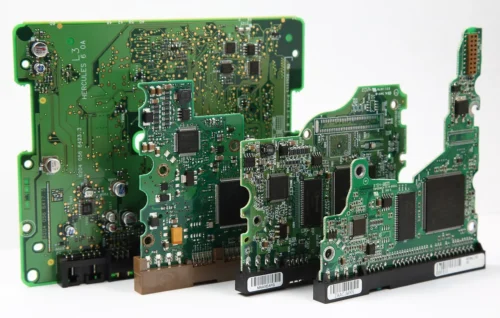Although PCB Circuit Board is not visible around us, it plays a very important role in every application. For example, the computer or mobile device you are using to read this article has a complex PCB in its structure. They typically contribute to the algorithms, processing, or storing data. Similar to this, there are hundreds or millions of products that require PCBs to operate. In the modern world, the use of PCBs has increased dramatically. Therefore, the demand for PCB production has also increased significantly. Consequently, most manufacturers are investing in fast & efficient production machinery. PCB laser cutting is one of this field’s most popular production machinery.
PCB laser cutting is fast, precise, and the most effective circuit board manufacturing method. Compared to mechanical cutting, PCB laser cutting is the most productive. It can produce hundreds of PCBs in just one hour. Besides, for DIY projects, a PCB laser cutting machine is also handy. Today, we are going to talk about all these fundamentals of PCB laser cutting or depaneling.
You know, hundreds of models with varying brands are out there to choose from. So, it may be difficult for you to identify the best machine for your project. Therefore, careful consideration is always recommended to ensure the highest cutting standard.
What is PCB Laser Cutting?
PCB laser cutting is a cutting-edge technology. It is one of the remarkable discoveries of the nineteenth century. It plays a very important role in the fabrication of electronic components. The definition says that PCB laser depaneling is a method that cuts PCBs using a high-power laser beam. Based on different laser sources, the type of laser beams may vary. For example, fiber lasers, CO2 lasers, YAG lasers, and UV lasers are noteworthy.
PCB Laser cutting is one of the electronics industry’s most popular production methods. This method is especially beneficial in the production of intricate & complex circuit designs. You can technically create smaller, lighter, and even more efficient electronic devices. So, we can realize that laser-cut PCBs have extensive applications in electronic devices. Starting from tiny sensors to large machinery, laser cut PCB boards are everywhere.

A typical example of a PCB laser-cutting machine can be observed. We have taken the Precision UV laser cutting machine from HiSpeed Laser as a reference. This cutting machine (Model: SL-FC4540-NU15) usually offers multiple laser powers ranging from UV 15W to 30W. You can get both equipment stations: single or double optical path and station. It offers precise positioning of 土3μm, accuracy of 士2μm, and depth control of ≤5μm.
How Does it Work?
The aim of this process is to transform a raw PCB board into a functional circuit board. Well, you may require cutting, engraving, or marking. Yet, the process is almost similar for every method. However, the laser settings and the type of laser machines may vary in this case.
Step#1 Preparation of the PCB material
Before starting the process, it is important to prepare the materials. At this stage, select an appropriate substance that is compatible with your laser engraving machine. FR-4, PTFE(Teflon), and metals are three popular types of PCB material. Well, FR-4 is a glass-reinforced epoxy laminate sheet that is considered to be the most popular.
Step#2 CAD Design Import
Normally, the designs of the PCB boards are created using various CAD software. Computer-aided design is the digital representation of your PCBs. Therefore, before importing the design data, ensure that you have considered all the constraints in the design. Finally, insert the CAD file into the laser machine.
Step#3 Calibration & Setup
At this stage, it is compulsory to calibrate the laser machine in the right alignment. This stage is necessary to ensure precision & accuracy in line with the CAD design. Well, setup requires configuring laser intensity, speed, and focal length. Note that, in appropriate settings, it may lead to unexpected results. You can also follow the manufacturer’s guidelines for the specific parameters.
Step#4 Laser Beam Positioning
The laser beam positioning is basically based on the CAD design. Advanced laser cutting machines like those utilized by HiSpeed Laser ensure high-precision systems. These devices can focus the laser with extreme accuracy. Therefore, it allows for intricate & fine details in the cutting process.
Step#5 PCB Laser Cutting
Now, the PCB laser cutting machine is ready to perform the cut, engrave, or marking. Based on different calibrations and settings, the laser beam will remove unwanted areas. This process is highly controlled. Therefore, you don’t need to be worried about the final quality. Moreover, you can achieve intricate patterns, traces, and cutouts with minimal material wastage.
Step#6 Additional Finishing (If Required)
After the process, you may require additional finishing steps. In most production methods, polishing, surface cleaning, or applying protective coatings are common. This additional process enhances the durability and functionality of the final product.
Why Choose PCB Laser Cutting?
Besides PCB laser cutting, other mechanical methods are also popular in manufacturing. The renowned methods are stamping, milling, routing, V-groove cutting, punching or waterjet cutting. So, why should you choose PCB laser depaneling? It is obvious that this cutting method offers a wide range of benefits.
%First reason is the excellent cutting result by laser PCB depaneling machine. Unlike other traditional methods, laser cutting creates smooth edges. Therefore, you may not require additional finishing after cutting. On the other hand, stamping or punching may not be as precise as laser cutting.
%Second reason is the speed & efficiency of PCB laser cutting. You know, speed is one of the crucial factors in the production of electronic devices. Speed & efficiency is the key to the success and profitability of the company. The high-speed capabilities of laser-cutting machines reduce production times. As a result, it enhances the overall efficiency of the manufacturing process.
%Third reason is the versatility & flexibility. As mentioned, PCB boards can be of three types. They are glass-reinforced epoxy laminate sheet (FR-4), PTFE (Teflon), and metal. A PCB laser cutting machine is capable of cutting, engraving, and marking these materials. The best example can be observed using a UV laser machine from HiSpeed Laser (Model: SL-FC4540-NU15).
PCB Laser Cutting Machine: A Wide Applications
Because of the mentioned reasons, PCB laser cutting machines are popular in many applications. Especially in the electronics industry, they are popular for making various delicate components. Some popular products include:
- PCB Panels are large boards containing multiple individual PCBs. Each of these are connected during the manufacturing process.
- Stencil Masks are thin sheets, typically made of stainless steel or polyester. They come with openings or cutouts that define the solder paste deposition areas on a PCB.
- Flex PCBs are laser cut circuit boards made of flexible materials like polyimide. They are prevalent in applications where traditional rigid PBs are not ideal.
- RF/Microwave PCBs are designed for high-frequency applications. These PCBs offer reliable performance at radio & microwave frequencies.
- LED PCBs are specially designed laser cut circuit boards for light-emitting diodes. They come with precise arrangement & connection of multiple LED components.

Well, the use of PCB laser cutting machines can be observed in various industries. %First and most popular is the electronics industry. Laser technology enables the production of compact & intricate circuitry for various electronic devices. %Second is the telecommunication industry. PCB laser cutting machines are prevalent in making various telecommunication equipment. For example, mobile phones, routers, modems, and many more. Besides, medical, automotive, aerospace and various consumer electronics industries are also noteworthy.
How to Choose the Right PCB Laser Cutting Machine for Your Project
So, in brief, we looked over the principles of PCB laser cutting processes. Well, another critical issue to cover is how to select the best machine for your project. This is very important to ensure the best outcome.
Tip#1: Always consider the project requirements beforehand. Therefore, check the cutting speed, precision, and compatibility with different materials. In addition, check for suitable laser power ranges and their different types.
Tip#2: Evaluate the technical specifications of the chosen device. What is the maximum working area? How good is the beam quality? In this case, check for customer response on various online platforms.
Tip#3: Analyze the brand recognition & machine reviews. You know, a reputed manufacturer with good customer reviews would likely supply reliable services. In this case, check the company certifications and their track record of product manufacturing. In this way, you can wisely validate the machine’s credibility.
Tip#4: Cost and efficiency are other essential aspects of the decision-making process. In this case, try to balance between the machine’s capabilities and the project budget. Always try to assess the long-term value. Here, you can include maintenance costs, replacement & upgrades as well.
Returning Questions
Q1. Is PCB laser cutting more expensive than mechanical methods?
Answer: No, PCB laser cutting is cheaper than mechanical methods. Well, the initial cost may be higher than other methods. Considering long-term operations, PCB laser cutting is actually cheaper than other mechanical methods.
Q2. Are components overheated or damaged by the laser beam?
Answer: No, this is one of the great advantages of PCB laser depaneling. The high-power laser beam precisely removes material without affecting the surroundings.
Q3. How fast is PCB laser cutting?
Answer: PCB laser cutting is the fastest method of manufacturing electronic devices in the world. The high-power laser beam with an automatic system makes the production faster than anything. Therefore, Most manufacturers are investing more in laser cutting for efficiency.
